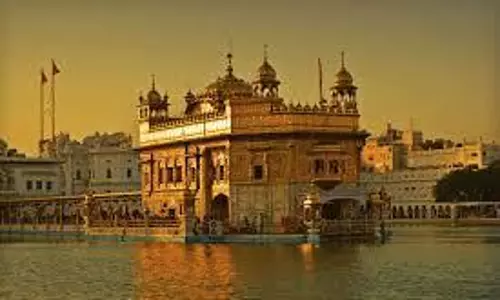
A rethinking that is long overdue
text_fieldsThe SSLC exam result as expected crossed 99% this time as well. Of the 4,26,892 students who took the exam, only 1,327 failed to qualify for higher studies. Majority of them will make it through the possibilities of revaluation and SAY (Save A Year) exams. The result in effect can be put at cent percent, nevertheless technically it is 99.69 per cent. Announcing the results this time, the Education Minister pointed out certain things: alongside qualitative changes in the state’s public education sector playing a role in increasing pass percentage, 'reforms' in the examination system and evaluation have also to be factored in. For a decade and a half, Kerala has been pursuing an extremely diluted examination and evaluation system that gives ‘A plus’ to even a below average student. Though it has significantly spiked the success rate, students falling behind in subsequent competitive exams is a truth. It seems the state government eventually heeds the criticism that experts have been raising for a few years. Eventually, the Education Department has decided to bring in a new method for the SSLC examination next year, introducing minimum marks for each subject. While avoiding a formal announcement in the context of the election, the minister made it clear that the government would go ahead with the plan. Indeed, this critical move needs to be welcomed; In other words, a necessary change demanded by the new age.
The most notable of it all is it will bring back the 'Subject Minimum' convention to pass the SSLC exam. In the current system of exam, out of 100 marks 80 percent goes to written exam and remaining 20 is for continuous evaluation (EC). Since continuous evaluation is done by schools themselves, naturally everyone gets full marks. Thus a student scoring ten marks in the written test will pass the exam. The generous evaluation that goes with it enables even below-average students to pass exams. It is in this context the Director of General Education openly said that even those who cannot write their own names without mistakes get A Plus in SSLC. Hence, students who emerge from this evaluation system get bewildered in the exams including NEET, JEE and Central University Entrance Examination. Reports in the recent years have pointed out that students hailing from State syllabus are falling behind in NEET and JEE exams. It should also be in this context that the government mulled over changes. A student appearing for SSLC from next year must secure a minimum of 30 percent marks in each subject, apart from continuous evaluation. As per the example mentioned above, a minimum of 24 marks out of 80 marks is required to qualify for higher studies.
The Department of General Education has plans for radical reforms in the public examination system and evaluation. It is in consideration after admission to graduate courses has given way to competitive exams. The SCERT (State Council of Educational Research and Training) is conducting a detailed study on this, even as the Education Department is planning to create a new model after studying examination and evaluation systems of various central and state examination boards. There is no doubt the change will help prepare the children more efficiently for competitive exams, enabling them to get admission in top colleges. The first thing to happen from this change is the fall in success rate; it is quite natural too. Until 2004 there had been only written exam for the SSLC. The Grade system was introduced replacing the system where a student required 33% marks in each subject to pass. The motive behind this move was to avoid competitive pressure in the name of marks. With the addition of EC and liberal evaluation, the change later turned out to be a mere technique to increase pass rate. Thus the pass percentage rose from 70 to 99. Many experts have already warned that this 'rise' will ultimately only harm children. Authorities tried to defend the criticism with the shield of new awakening in public education. New decisions appear to be self-corrections to that approach. Let’s hope that this change will bring in a new 'model' in Kerala's educational advancement.
























